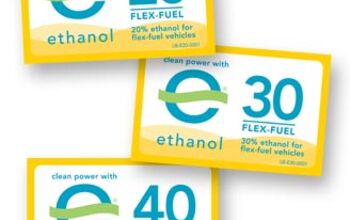E85 Boondoggle Of The Day: Mandatory Flexibility
Green Car Congress reports that an “Open Fuel Standards Act” has been introduced which would require half of all light duty vehicles sold in the US to be flex-fuel capable. The legislation would ramp up requirements to mandate 80 percent flex-fuel capability by 2015. Since ethanol has been running into trouble of late, the industry’s plan now centers on forcing OEMs to bring flex-fuel capability across their lineups, which supporters say will drive greater availability of E85 pumps. The plan would also enable the proliferation of mid-range ethanol blends like E20 and E30, since E85-capable flex-fuel vehicles would also be able to run on the intermediate blends that the ethanol industry so desperately wants to become mainstream. The only waivers for this mandate would be for OEMs who can prove that ethanol fuels prevent plug-in hybrids and other alt-energy vehicles to flunk state emission standards. Meanwhile, as rules are being written for the Renewable Fuel Standard, and a group of Senators are moving to prevent the use of indirect land use change (ILUC) to calculate the total GHG output of biofuels.
The law mandates measurement of “direct emissions and significant indirect emissions such as significant emissions from land use changes, as determined by the Administrator.” And though there are many complexities in attempting to calculate the full impact of biofuels, Senators don’t see this as a challenge to be undertaken, but a baby to be thrown out with the bathwater. The senators “urge EPA to refrain from including any calculations of the ILUC components in determining life-cycle GHG emissions for biofuels at this time. The premature publication and use of inaccurate or incomplete data could compromise the ability to formulate a sound approach to implementing this life cycle GHG emissions requirement in the future. And the resultant rulemaking confusion could seriously harm our US biofuels growth strategy by introducing uncertainty and discouraging future investments.” Oh yeah, and we would have to find new campaign contributors too.
More by Edward Niedermeyer
Latest Car Reviews
Read moreLatest Product Reviews
Read moreRecent Comments
- Jeff Self driving cars are not ready for prime time.
- Lichtronamo Watch as the non-us based automakers shift more production to Mexico in the future.
- 28-Cars-Later " Electrek recently dug around in Tesla’s online parts catalog and found that the windshield costs a whopping $1,900 to replace.To be fair, that’s around what a Mercedes S-Class or Rivian windshield costs, but the Tesla’s glass is unique because of its shape. It’s also worth noting that most insurance plans have glass replacement options that can make the repair a low- or zero-cost issue. "Now I understand why my insurance is so high despite no claims for years and about 7,500 annual miles between three cars.
- AMcA My theory is that that when the Big 3 gave away the store to the UAW in the last contract, there was a side deal in which the UAW promised to go after the non-organized transplant plants. Even the UAW understands that if the wage differential gets too high it's gonna kill the golden goose.
- MKizzy Why else does range matter? Because in the EV advocate's dream scenario of a post-ICE future, the average multi-car household will find itself with more EVs in their garages and driveways than places to plug them in or the capacity to charge then all at once without significant electrical upgrades. Unless each vehicle has enough range to allow for multiple days without plugging in, fighting over charging access in multi-EV households will be right up there with finances for causes of domestic strife.


































Comments
Join the conversation
"Don’t use my tax money to pay for the research or infrastructure of E85. Look for venture capital. If no one is interested, probably it’s a bad idea. If someone invested and earned big, good for him." You do know that the Internet and GPS technology both started as government funded projects, yes? To this day, GPS receivers rely on signals provided gratis by the US government's network of GPS satellites.